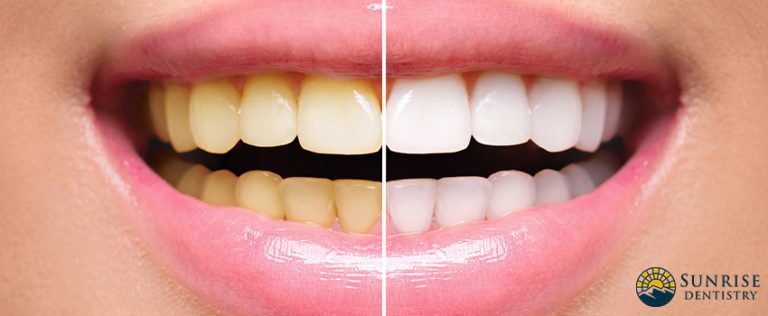A regular dental visit consists of a thorough dental examination and oral prophylaxis. Going to the dentist every six months will keep your oral health in check. You wouldn’t want to hear that you have a bad case of periodontitis or gingivitis.
In hopes of keeping your permanent teeth, following your oral routine is essential. Among the many oral problems you may encounter are gingivitis and gum disease. Knowing the difference between the two will allow you to take the necessary course of action. Your dentists from Sunrise Dentistry will enlighten you.
Difference Between Gingivitis and Periodontitis
Gingivitis, also known as gum inflammation, is the early stage of gum disease. With proper dental hygiene, this may go away. The usual symptoms of gingivitis include:
- Bleeding
- Redness
- Swelling
Its symptoms may not be alarming, but you have to be proactive when it comes to your dental health. When left untreated, it will develop into periodontitis. However, note that not all cases of gingivitis turn for the worse.
Periodontitis, also known as gum disease, is the advanced stage of periodontal disease. Symptoms of periodontitis include:
- Redness
- Bleeding
- Teeth sensitivity
- Receding gums
- Bad breath
- Soreness
In the early stages of gingivitis, the bacteria in the plaque causes inflammation. You’ll notice that your gums bleed when you brush your teeth. Your gums are sensitive, but your teeth are still intact in the sockets. At this stage, bone or tissue damage is reversible.
With periodontitis, the bone and inner layer of the gums detach from the teeth. When this happens, gaps between the teeth and gums form. Food particles can accumulate in these pockets and infect the gums. Your immune system will fight the bacteria.
Over time, the toxins from the bacteria and the “good enzymes” from your body will damage your bone and connective tissue. Your teeth will become loose, and tooth loss becomes a possibility.
Causes of Gingivitis and Periodontitis
The most common culprit of gum problems is plaque buildup. However, there are other factors that make you more susceptible to gum disease. These factors are:
- Illnesses – People with cancer, HIV, and diabetes are more prone to gum disease. This is because they’re immunocompromised.
- Hormonal changes – Those that are undergoing puberty, menopause, pregnancy, and menstruation have more sensitive gums. It makes it easier for gingivitis to develop.
- Poor dental habits – Skipping flossing and brushing allows bacteria to breed and grow.
- Medications – There are medications that interfere with saliva production. Others cause abnormal gum tissue growth.
- Bad habits – Smoking cigarettes hinder the gum tissue’s ability to repair itself.
Treatment for Gingivitis and Periodontitis
Your dentist will conduct an assessment of your teeth and gums. The treatment plan will depend on the following:
- Your overall health
- Stage of gum disease
- How well you have responded to previous treatments
The earlier the detection, the better chances you have. For gingivitis, your dentist will show you the proper way to brush and floss your teeth. You’re also required to undergo professional dental cleaning twice a year.
For advanced gum disease, the goals of your treatment plan are the following:
- Minimize swelling
- Reduce the risk of infection
- Stop the progression
- Reduce the depth of pockets
There are non-surgical and surgical treatment options. Your dentist will determine if non-surgical treatments will suffice.
Non-Surgical Treatment Options For Gum Disease
Scaling and Root Planing
This is a deep-cleaning procedure. Your dentist will use a local anesthetic so you won’t feel any discomfort. During this procedure, your dentist will scrape tartar and plaque buildup below and above the gum line. Then, the dentist will smoothen the rough edges. This will minimize the areas where bacteria may breed.
Professional Dental Cleaning
When you undergo professional dental cleaning, plaque and tartar buildup is removed. If your dentist sees signs of gum disease, he or she will recommend a more frequent professional dental cleaning.
Surgical Treatment Options For Gum Disease
Soft Tissue Grafts
With this procedure, your receded gums are replaced with tissue from the roof of your mouth. Your dentist will stitch the grafted tissue onto the affected area.
Guided Tissue Regeneration
Your dentist may recommend this when the bone that supports your teeth is destroyed. This surgical procedure will allow gum tissue and bone to grow. This treatment option may be done in conjunction with flap surgery.
Note that these treatment options are not complete. Your dentist will discuss all the possible treatment options.
Schedule An Appointment With Sunrise Dentistry Today!
Your teeth are a vital part of your life — from chewing, talking, to smiling.
If you’re looking for licensed Durango, CO dentists, look no further! Our clinic at Sunrise Dentistry will accommodate you. Allow our team to provide you with the best dental care possible. Don’t let periodontitis or gingivitis ruin your smile. Call us today, and we’ll see what we can do for you!





